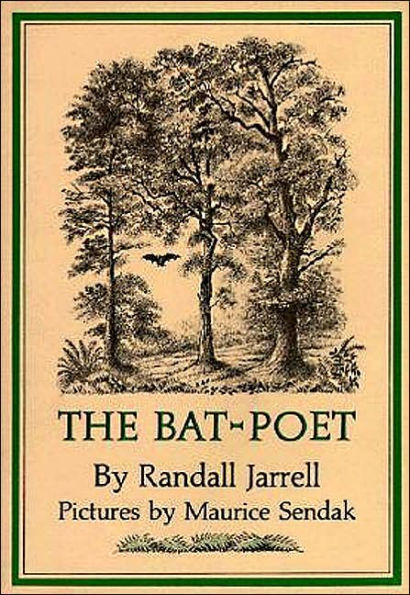There was once a little brown bat who couldn't sleep days—he kept waking up and looking at the world. Before long he began to see things differently from the other bats who from dawn to sunset never opened their eyes. The Bat-Poet is the story of how he tried to make the other bats see the world his way.
With illustrations by Maurice Sendak, The Bat-Poet—a New York Times Best Illustrated Children's Book selection—is a collection of the bat's own poems and the bat's own world: the owl who almost eats him; the mockingbird whose irritable genius almost overpowers him; the chipmunk who loves his poems, and the bats who can't make heads or tails of them; the cardinals, blue jays, chickadees, and sparrows who fly in and out of Randall Jarrell's funny, lovable, truthful fable.
Supports the Common Core State Standards
There was once a little brown bat who couldn't sleep days—he kept waking up and looking at the world. Before long he began to see things differently from the other bats who from dawn to sunset never opened their eyes. The Bat-Poet is the story of how he tried to make the other bats see the world his way.
With illustrations by Maurice Sendak, The Bat-Poet—a New York Times Best Illustrated Children's Book selection—is a collection of the bat's own poems and the bat's own world: the owl who almost eats him; the mockingbird whose irritable genius almost overpowers him; the chipmunk who loves his poems, and the bats who can't make heads or tails of them; the cardinals, blue jays, chickadees, and sparrows who fly in and out of Randall Jarrell's funny, lovable, truthful fable.
Supports the Common Core State Standards

Bat-Poet
48
Bat-Poet
48Paperback
Related collections and offers

Product Details
| ISBN-13: | 9780062059055 |
|---|---|
| Publisher: | HarperCollins Publishers |
| Publication date: | 10/28/1996 |
| Series: | Michael Di Capua Books Series |
| Pages: | 48 |
| Sales rank: | 271,413 |
| Product dimensions: | 6.25(w) x 8.87(h) x 0.00(d) |
| Lexile: | 660L (what's this?) |
| Age Range: | 8 - 12 Years |
About the Author
Customer Reviews
Explore More Items
Read the fourth book in the #1 New York Times bestselling Maze Runner series, perfect for fans of The Hunger Games and Divergent. The first and second books, The Maze Runner and The Scorch
Read the second book in the #1 New York Times bestselling Maze Runner series that is soon to be a motion picture, hitting theaters September 18, 2015, and is perfect for fans of The Hunger Games
Get lost in the thrilling action and twisting plotlines of James Dashner’s #1 New York Times bestselling Maze Runner series. Read the first two books—The Maze Runner and The Scorch
Hannah is tired of holiday gatherings−all her family ever talks about is the past. In fact, it seems to her that's what
"Haunted and haunting. . . . With fearlessness and humility, in a narrative that flows more artfully than ever between destruction and rebirth, Erdrich has opened herself to possibilities beyond what
What happens when a trained killer discovers that his true vocation is love? Having survived the killing fields of World War I, Fidelis Waldvogel returns home to his quiet German village and marries
